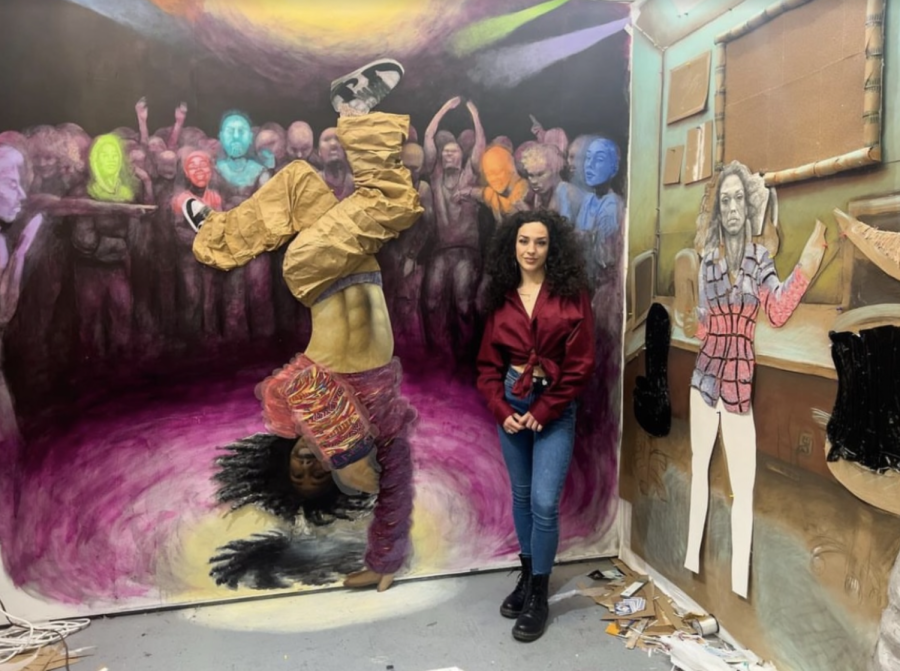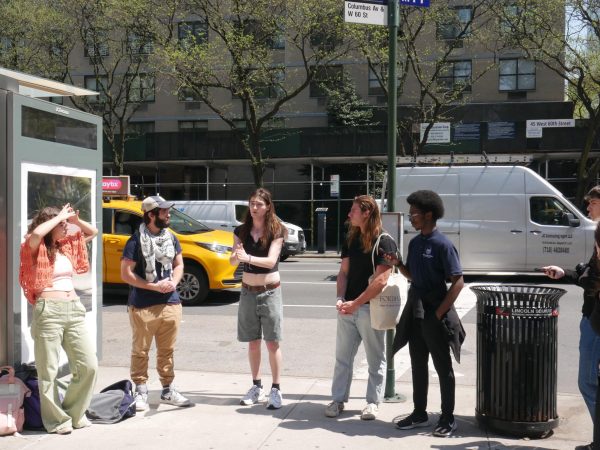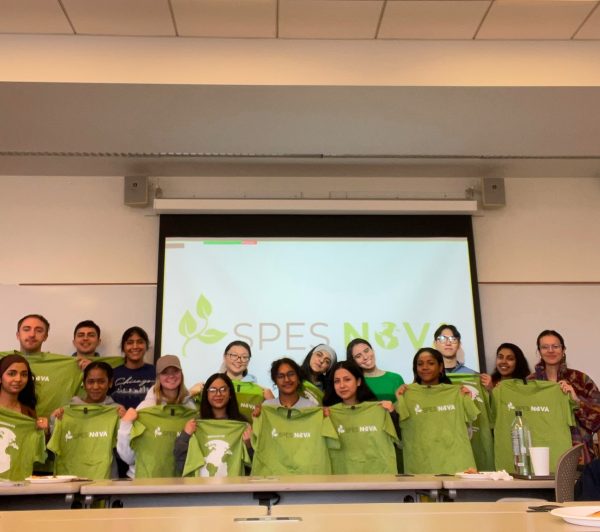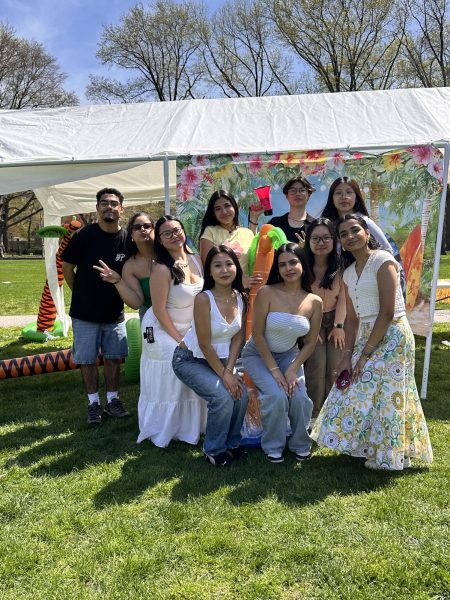Alumna Transforms Everyday Objects Into Meaningful Art
Artists like Van Gogh, Monet and Picasso made their art on a canvas with oil paints and watercolors in a now conventional way, but artist and Fordham alumna Annie Legnini, FCRH ’16, uses everyday objects to portray people’s daily lives, such as coffee filters, Pokemon cards and paper towels to create portraits of real people.
Legnini has pioneered this original style of artwork as she creates art featuring the lives of people who grew up in the Bronx. During Legnini’s time at Fordham, she said she noticed the lack of awareness about the Bronx among other members of the Fordham community. So, when she graduated from Fordham with a B.A. in Visual Arts and Women’s Studies, she said she decided to focus her art projects on stories of the Bronx community.
Legnini spoke about her work on Wednesday, Feb. 16 during Urban Storytelling Through Art, an event hosted by Campus Ministry. She explained that just as Ignatian flourishing is all about immersive imagination which means uncovering thinking patterns, habits, perspectives and the movements of the soul, her art focuses on immersive environments.
For example, Legnini spoke a lot about her Bronx Faces project in which she asked residents of the Bronx to share their unique life stories with her. Based on these stories, Legnini constructed portraits of each participant using conventional materials such as oil paints as well as ordinary materials such as Pokémon cards that were connected to an aspect of their stories. Legnini’s aim was to use these everyday materials to create an extraordinary piece of artwork, or to create “an ordinary that transcends the ordinary.”
Legnini further applied this technique in her portraiture installations, which are paintings that immerse the viewer within a certain space. For instance, when she created a painting of her friend, Brandon, who works in a library in the Bronx, she used pieces of his favorite books to literally construct him because, as Brandon had told her, those books were a part of his soul. The portraiture installations do not have to be about an extraordinary event; instead, they are about the daily lives of individuals.
“Highlighting the individual connects us to their world and to each other. No one exists on their own; we are all interconnected,” said Legnini.
Vanessa Rotondo, associate director of campus engagement and senior advisor for Ignatian leadership, explained how Legnini’s work related to Ignatian values.
“In the true Ignatian fashion, Annie noted how she finds her passion in the work to highlight the things we ordinarily would miss. Ignatius calls us to be creative as we find God in all things, and I think Annie invited us all into that tradition, through her creativity.”
Robert Parmach, director of Ignatian mission initiatives, said he has similar thoughts to Rotondo.
“St. Ignatius was a big supporter of ‘immersive imagination’ — revealing the contours and reactions of your interior self. Being attentive to the movements of your entire being — attitudes, perspectives, habits, patterns of thought — and then working to offer the best version of yourself in response to the current situation. Visual art is a great way to tap into such emotional and spiritual intelligence with others.”











































































































































































































